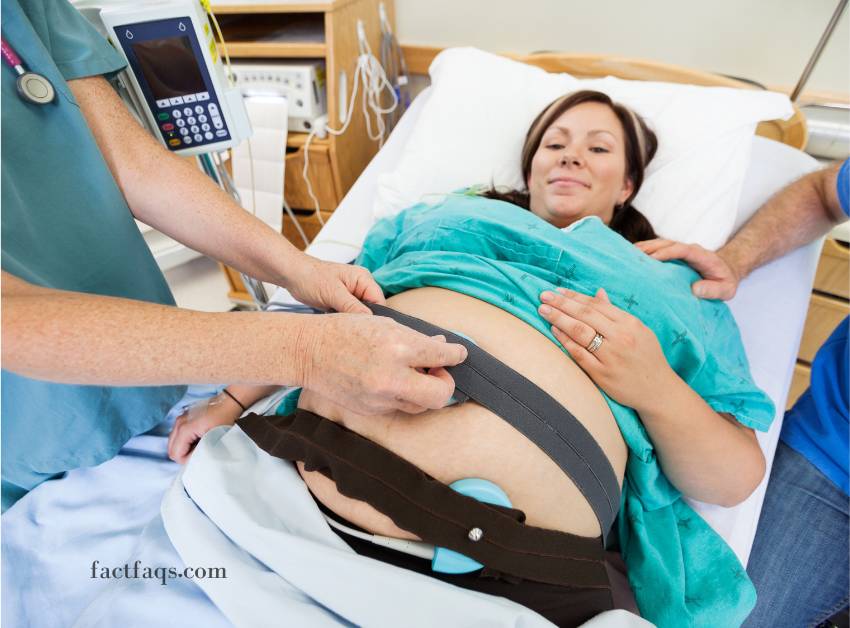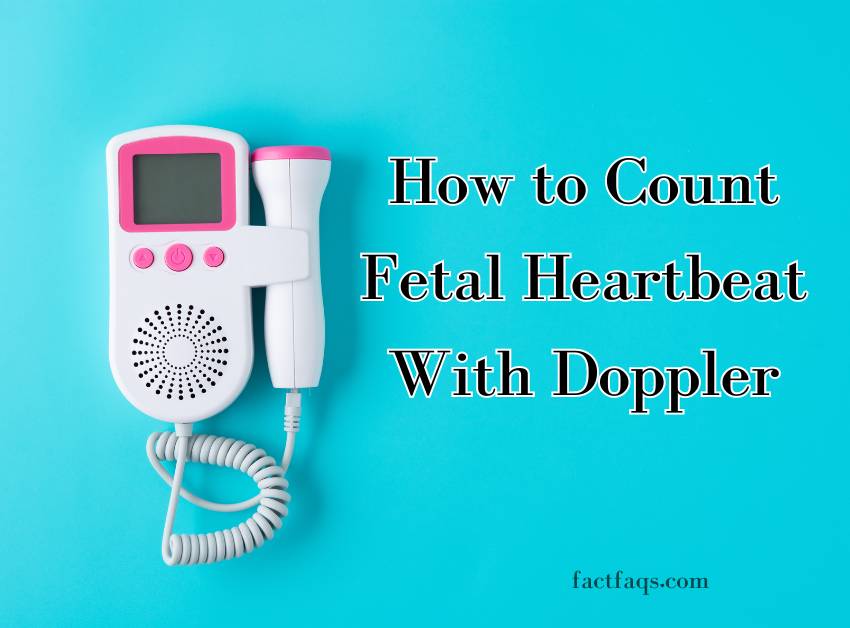To count a fetal heartbeat with a Doppler, apply ultrasound gel to the mother’s abdomen and move the handheld probe until you detect the heartbeat. Holding the probe steady, listen for the rhythmic sounds that indicate the baby’s heart rate.
Measuring a baby’s heartbeat is a vital sign of health during pregnancy. A fetal Doppler device allows parents and healthcare providers to monitor the heart rate of a fetus, typically starting around 12 weeks into the pregnancy. This handheld ultrasound instrument detects the movement of the baby’s heart, translating it into audible sounds.
Expecting mothers often find reassurance in hearing their baby’s heartbeat, while healthcare professionals use the information to assess fetal well-being. It’s essential to perform the procedure correctly to obtain an accurate reading, and understanding the proper technique can make the process smoother. Remember that while Doppler devices are generally safe, they should be used in moderation and preferably under the guidance of a healthcare provider.

Understanding Doppler Use
Fetal heartbeat monitoring is a key indicator of a baby’s well-being in the womb. It helps in detecting any potential issues early on. Expectant parents and health professionals often use a Doppler ultrasound device to hear the baby’s heartbeat. This non-invasive method uses high-frequency sound waves to capture the echo as it bounces off the moving fetus, which in turn is translated into sound.
Understanding the basic principles of Doppler ultrasound is essential. It relies on the Doppler effect; changes in frequency or wavelength of waves in relation to an observer moving relative to the source of the waves. In pregnancy, this technology captures the movement of the fetal heart and provides real-time auditory feedback.
| Doppler Ultrasound | Traditional Stethoscope |
|---|---|
| High-frequency sound waves | Acoustic detection |
| Real-time auditory feedback | Limited to practitioner’s hearing |
| Can detect early in pregnancy | Used later in pregnancy |
Preparing For Doppler Monitoring
Choosing the right Doppler device is crucial for accurately monitoring the fetal heartbeat. Consider devices that come with high recommendations from health professionals. Ensure the Doppler is FDA-approved for safety and efficiency. Additionally, look for models that offer clear sound quality and have adjustable volume settings.
Counting the fetal heartbeat can typically begin at around the 12th week of pregnancy. Consult with a healthcare provider to determine the most appropriate time based on individual circumstances.
For the best experience, adopt a comfortable position before starting the monitoring session. Lying on your back with a pillow under your hips can help. Relax and calm your breathing to create a serene environment, which is conducive for both you and the baby.
Locating The Heartbeat
Finding the fetal heartbeat with a Doppler requires patience and a bit of technique. Initially, ensure you’re in a quiet environment and have a comfortable position, typically lying on your back. Apply ultrasound gel to the Doppler’s probe and your lower abdomen. Starting from the pubic bone, slowly glide the probe upwards, angling it slightly towards the pelvis. Move the device in a gentle, sweeping motion and listen for the consistent rhythmic beat which may be quicker than your own heart rate; an indication you’ve located the fetal heartbeat.
To distinguish the fetal heartbeat, place emphasis on identifying a regular and rapid rhythm that ranges between 120 to 160 beats per minute. This sound is typically compared to the galloping of horses and is distinct from the mother’s slower heartbeat. On the other hand, some common errors include mistaking maternal heartbeats or background noises for the fetal heartbeat. Avoid pressing the probe too hard as it may obscure the fetal heart tones and differentiate between arterial noises and the actual fetal heartbeat by the beats’ speed and consistency.
Interpreting The Heartbeat

Understanding normal heart rate ranges is crucial when using a Doppler to listen to a fetal heartbeat. Expectant parents and healthcare providers should know that a typical fetal heart rate is usually between 110 and 160 beats per minute. This range can fluctuate based on the age and activity level of the fetus.
Recognizing a healthy heartbeat pattern involves identifying a consistent rhythm and rate that falls within the normal range. Occasional variations are expected, but the overall pattern should be regular and stable.
Variations in fetal heart rate might be an indication of the fetus’s health. Sudden or dramatic fluctuations can indicate distress or abnormal conditions and warrant further medical investigation. It’s important to be attentive to these changes and consult with healthcare professionals if there are concerns about irregular heart rates or patterns.
Frequency And Duration
Counting the fetal heartbeat with a Doppler device can be quite reassuring for expectant parents. It is recommended to start using a Doppler only after the first trimester. This is because fetal heartbeats are generally detectable from the tenth to the twelfth week of pregnancy.
During the second trimester, listen to the fetal heartbeat for no more than 10 minutes at a time. This frequency is considered both safe and sufficient. It is essential to remember that using the Doppler for prolonged periods should be avoided. Excessive use might cause unnecessary worries or potential risks.
In the third trimester, monitoring can occur more frequently, as the baby’s heart is stronger and easier to detect. Nevertheless, maintaining sessions under 10 minutes remains the standard guidance to ensure safety.
| Trimester | Recommended Use | Safe Duration |
|---|---|---|
| First | Not Recommended | N/A |
| Second | Limited to short intervals | Up to 10 minutes |
| Third | More frequent checks permitted | Up to 10 minutes |
Precautions And Considerations
Understanding the potential risks associated with the overuse of a Doppler device is crucial. Excessive exposure or incorrect use may lead to false reassurance or unnecessary anxiety. It’s important to use the Doppler sparingly and only as advised by a healthcare provider.
Applying minimal pressure during usage is also key. The aim is to gently glide the Doppler probe over the belly without pressing too hard, as excessive force could be uncomfortable and potentially harmful to both the mother and fetus. Keeping the movement slow and steady often yields the best results.
It is paramount to consult healthcare professionals if there are any concerns regarding the fetal heartbeat. Whether it is difficulty in locating the heartbeat or if there are changes in the pattern or rate, professional guidance should be sought. They can provide expert insights and necessary interventions if needed.
Frequently Asked Questions On How To Count Fetal Heartbeat With Doppler
When Can You Detect A Fetal Heartbeat With A Doppler?
Fetal heartbeats can usually be detected with a Doppler device between 8 and 12 weeks of pregnancy. This timing can vary based on several factors, including the position of the fetus and the mother’s body type.
How To Use A Doppler To Find A Fetal Heartbeat?
To use a Doppler, apply ultrasound gel on the belly and move the probe slowly. Look for heartbeat sounds in the lower abdomen area. Use gentle pressure and be patient, as it may take time to locate the heartbeat.
Is A Doppler Safe For Counting Fetal Heartbeat?
Dopplers are generally considered safe when used correctly and sparingly. However, they emit ultrasound waves, so it’s recommended to use them under medical guidance to minimize exposure.
How Accurate Is A Fetal Doppler For Heartbeat Monitoring?
When used properly, fetal Dopplers can accurately detect the heartbeat of the fetus. Accuracy improves as pregnancy progresses and it’s most reliable after the first trimester.
Conclusion
Understanding fetal heartbeat tracking with a Doppler is a valuable skill. It offers peace of mind and strengthens the bond with your unborn child. Always follow safety guidelines and consult healthcare providers for best practices. Remember, regular check-ups are vital.
Embrace this magical experience with confidence and care.
